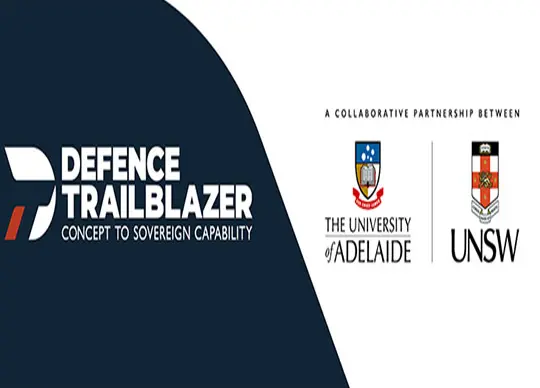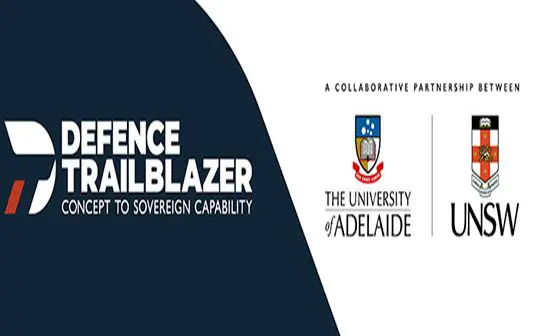
The Defence Trailblazer program is on track to boost Australia’s sovereign defence capabilities by upskilling the workforce and accelerating leading-edge science and technology.
Officially launched this month by Senator the Hon. Anthony Chisholm, Assistant Minister for Education and Regional Development, the program is a strategic partnership between the University of Adelaide and UNSW Sydney with support from the Australian Government’s Department of Education.

“Defence Trailblazer is a once in a generation opportunity to help transform the defence innovation ecosystem, bringing together defence, industry and academic partners to accelerate the delivery of sovereign capabilities for the nation’s security and prosperity,” said Defence Trailblazer Executive Director, Dr Sanjay Mazumdar.
Assistant Minister Chisholm said the “Defence Trailblazer: Concept to Sovereign Capability project led by the University of Adelaide in partnership with UNSW will herald in a new era of innovation for the country’s defence industry.”
The launch at the National Wine Centre, Adelaide, provided an opportunity for attendees to hear from a distinguished line up of speakers to gain invaluable insights into the program’s vision, mission, and key deliverables.
Keynote speakers:
- Senator the Hon. Anthony Chisholm, Assistant Minister for Education, Assistant Minister for Regional Development
- Professor Peter Høj AC, Vice-Chancellor and President, the University of Adelaide
- Professor Attila Brungs, Vice-Chancellor and President, UNSW Sydney
- Dr David Kershaw, Chief Science Strategic Planning & Engagement, Defence Science Technology Group
- Dr Scott Beinke, Research Engineer Associate Manager, STELaRLab, Lockheed Martin Australia
- Dr Sanjay Mazumdar, Executive Director at Defence Trailblazer.
University of Adelaide’s Vice-Chancellor and President, Professor Peter Høj AC said that the Defence Trailblazer is an example of true collaboration.
“We are pleased to partner with an outstanding University such as UNSW. The Defence Trailblazer program draws together industry and academia to create the workforce and technologies of tomorrow that can help ensure Australia’s security and prosperity.
“Not only will this program develop cutting-edge science and technology, but it will also equip the next generation of innovators with specialised knowledge and skills to meet the defence sector’s needs now, and in coming decades.”
UNSW Vice-Chancellor and President Professor Attila Brungs, a keynote speaker at the launch, said UNSW is proud to work with the University of Adelaide, industry partners and Defence to lead research commercialisation initiatives that will strengthen Australia’s defence capabilities and assets.
“UNSW has a proud track record of commercialising research projects that develop into real-world outcomes. And we know that University-industry collaboration is imperative to ensure research is translated into outcomes that benefit all Australia.
“Like our friends at the University of Adelaide, UNSW has a long history of partnering with the defence sector and is a leader in defence research, with strengths in space, cyber, hypersonics, quantum and autonomy.”
The event featured exhibits showcasing the technological capabilities of both universities as well as demonstrations from industry partners DTEX Systems, Quantx Labs and Silentium Defence.
A global leader in the design and deployment of passive surveillance systems, Silentium Defence exhibited its soldier-portable, MAVERICK M8 passive radar at the launch event.
“We’re proud to have joined the Defence Trailblazer group of partners, and to demonstrate our unique, Australian designed and developed capability,” said Dr James Palmer, CEO Silentium Defence.
“Our MAVERICK passive radars are the first new class of surveillance technology to be used by Defence in decades and provide a new level of covert situational awareness, enabling personnel to see without being seen, from ground to space.”





